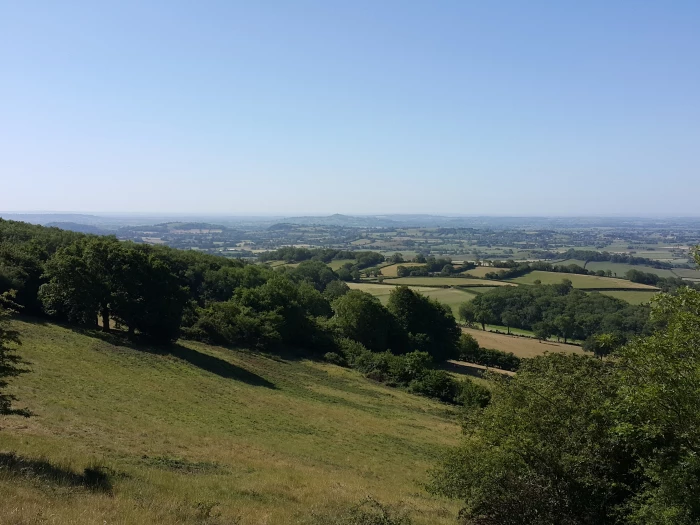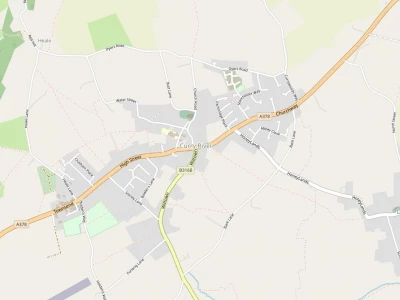Natural England launches Somerset 'Super' Reserve
Natural England
launches Mendip "super" National Nature Reserve to boost nature recovery
- Natural England and its partners today declare new Mendip National Nature Reserve
- Launch is second in new King's Series of National Nature Reserves
- Site covers 1,410ha of land from Brean Down to East Mendip
Natural England and its partners have today launched a new "super" National Nature Reserve across the Mendip Hills which marks the second in the new King's Series of National Nature Reserves committed to enhancing biodiversity and nature recovery.
The declaration comes as a result of a partnership between Natural England, Mendip Hills AONB, the National Trust, Longleat/Cheddar Gorge Caves, Somerset and Avon Wildlife Trusts, Butterfly Conservation, the Woodland Trust and the South West Heritage Trust, who are all working in partnership to manage the NNR with a shared objective for nature recovery. Together, the organisations have ambitious plans to recover nature in the Mendips.
The Mendip Hills is a vibrant landscape of steep limestone slopes, traditional wildflower grasslands, ancient wooded combes, spectacular gorges and rocky outcrops with stunning views and a rich array of wildlife and history.
The NNR brings together the existing Ebbor Gorge and Rodney Stoke National Nature Reserves, along with 29 nature-rich sites, many of which are Sites of Special Scientific Interest, and the Mendip Hills Area of Outstanding Natural Beauty area, stretching from woodlands in England's smallest city of Wells, across the southern Mendip slopes and plateau and reaching right out to Brean Down in the Severn estuary, bringing greater access to nature for local people and the thousands of visitors who flock to the area each year.
Joining up 1,410ha of land managed for nature conservation, the NNR links ecologically important sites along the popular walking route of the Mendip Way and will bring in more than 400 hectares of non-SSSI land that will be managed with nature conservation as the primary purpose.
The new, larger "super" National Nature Reserve, will see nine organisations working together in partnership to improve collaboration and joined-up management for wildlife and geology. This partnership will be at the heart of nature recovery in the Mendip Hills. It will enable land managers to work together to maximise the benefits for nature, science, and people, improving access and creating more opportunities to connect with the natural world.
The accolade of National Nature Reserve declaration confirms the national importance of a nature reserve, contributing to the ever-increasing area of England in which nature conservation is the primary purpose of land management and will be, in perpetuity. Multi-party National Nature Reserves such as Mendip are increasing in number, bringing together the skills, knowledge and long-term commitments of different organisations to deliver the three purposes of the designation: nature conservation, environmental science and public access, enjoyment and engagement.
The site is the second in the new King's Series of National Nature Reserves. The Series will see five major National Nature Reserve declarations each year for the next five years.
Tony Juniper, Chair of Natural England, said:
"Today's declaration of the new Mendip National Nature Reserve is a huge step for nature recovery, not just in Somerset and the west of England, but the country as a whole. This treasure trove of ancient woodlands, rich wildflower grasslands and stunning geology has national importance due to its habitats and sustains a huge variety of wildlife from birds to small mammals and from rare butterflies to plants found only here.
"Working with partners to create this new National Nature Reserve will be a step along the road of enhancing the biodiversity of the Mendip Hills making it a bigger, better and more joined up place for wildlife to thrive. It also means this area is recognised for its importance to nature and people, where the local community has so many opportunities to connect with nature, history and the local heritage."
Lord Bath of Longleat Estate said:
"Cheddar Gorge is one of Britain's most spectacular natural landmarks, comprising a large and significant part of the Mendip Hills' footprint and bio connectivity. As a private landowner of part of this special piece of Britain, we take our responsibility as custodians extremely seriously. Through the Cheddar Gorge and Caves enterprise, we work to attract many people to this area to enjoy and experience this outstanding part of the world. In addition, we work tirelessly to ensure this amazing mosaic of land is conserved for future generations of visitors to enjoy and populations of diverse wildlife to thrive.
"The formation of the new National Nature Reserve is a ground-breaking opportunity for conservation and land management. We look forward to making a real impact together with the other partners, not least for the species that are native to these habitats – from greater crested newts to dormice, and the extremely rare plants that flourish in abundance in our unique pocket of land."
Nigel Garnsworthy, National Trust Somerset Countryside Manager, added:
"The National Trust and its partners have been working for many years to maintain a healthy, resilient landscape buzzing with wildlife across the Mendip Hills and the NNR declaration is testament to that success. We are excited about the chance to work in closer collaboration to make a positive difference for nature and climate and ensure the special Mendip wildlife is benefitting from habitats that are bigger, in better condition and better connected."
The landscape of the Mendip NNR encompasses diverse wildlife-rich and geological features with areas of priority habitat including species-rich calcareous grassland and ancient woodland combes alongside significant gorges, dry valleys and cave systems carved by ancient glacial meltwaters into the underlying Carboniferous limestone.
The geological landscape ranges in age from Devonian to Jurassic (approximately 372 to 161 million years old) in a relatively small area, making it one of the best places in the country to appreciate the relationships between geology, landscape and biodiversity. Cave sediments preserve the remains of some of our most diverse and important small mammal faunas from the last Ice Age as well as reindeer, mammoth and hyena which once roamed the landscape. The variety and the transitional nature from marine to inland and from the Levels up to the Mendip Plateau, provides important diversity, complexity and connectivity which is needed for nature recovery.
Special species that make their home in the Mendips include horseshoe bats, adder, skylark, water vole, hazel dormouse, small pearl-bordered fritillary, black oil beetle and a calcareous grassland assemblage, including endemic plants such as Cheddar pink and the nationally rare little robin and purple gromwell. The nationally endangered lesser and greater horseshoe bats are both found within the Mendip NNR, the cave and mine systems in the area providing an ideal habitat.
The Mendip Hills is enjoyed by local people, as well as visitors from local towns and cities and further afield, with many thousands of people heading there for holidays. The area is a wildlife and outdoor pursuits destination and within the NNR is connected by just over 50km of The Mendip Way long distance walking trail, giving people access to the landscape and a chance to connect with nature. The Mendip Way long-distance walking trail links many of the sites within the Mendip NNR and will also meet the King Charles III England Coast Path near Brean Down. The new NNR partnership will be promoting responsible access and active enjoyment of the sites.
National Nature Reserve status is given to the very best nature conservation sites in England and is recognition that the land is nationally important and will be managed in perpetuity for its wildlife and geology. Many National Nature Reserves are managed – like the Mendip National Nature Reserve – by multiple parties also known as Approved Bodies who are committed to working together towards a shared future vision for the Nature Reserve.
Read more about the power of National Nature Reserves in this blog by Tony Juniper.
Get In Touch
CurryRivelOnline is powered by our active community.
Please send us your news and views.
Email: editor@curryrivel.org.uk






